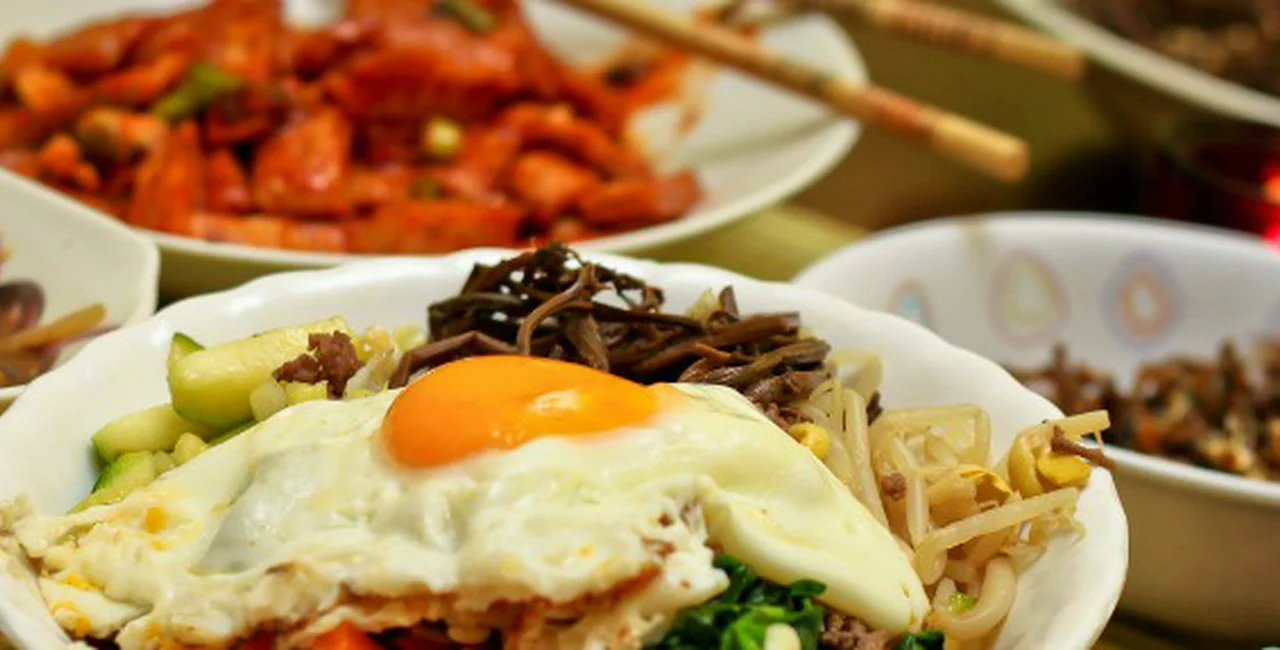Exotic spicy sents waft out as Khan Yun opens the door to the Holešovice apartment he shares with his wife, Jessica Sands. Entering their home is like entering into a little slice of Korea, their cupboards and counter tops filled with Korean chilli powders and pastes, soy and fish sauces and various odd looking ingredients.
Khan, a professional photographer, VJ and party promoter, grew up in Seoul, the capital city of South Korea. His is a culture that drinks more spirits than Russians, repects ancestral rites and has a strict and complicated age hierarchy.
PARTNER ARTICLE
Almost half the population of South Korea lives in the city of Seoul and with almost 20 million people crowding its streets it must have been fate that led him to cross paths with his future wife. The two, who are now expecting thier first child, wanted to be in Europe and after discovering Praha on holiday decided to settle in and make the Czech Republic home.
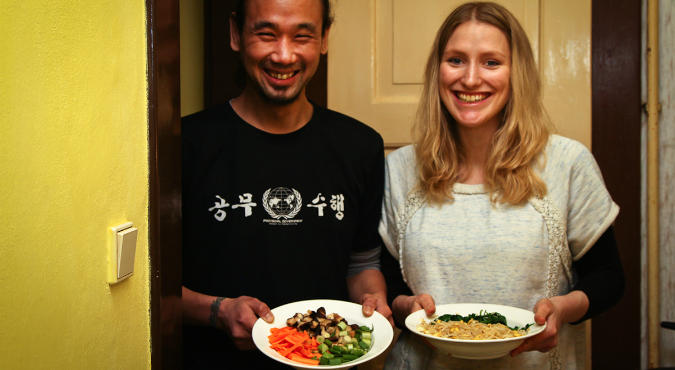
Despite a love of local favorites like sauerkraut and frankurter soup both say there is not enough fish in the Czech diet and find themselves missing other Korean specialities like multigrain and black rices, and tasty treats like intestines and raw pickled crab.
Some things are easy to compensate for like using local zucchini and spinach in place of similar types of Korean squash and spinach but certain ingredients, like many of the sauces, and spices, are irreplacable. Shin Food’s carry a good stock of these speciality items although quality fresh veggies are sometimes hard to find.
In Korea people eat out a lot as its cheaper and meats are usually cooked on a table top BBQ. Most Korean homes don’t have ovens and in the Czech Republic the grills are hard to come by so Jess makes due with a frying pan which alters the flavor a bit. Traditionally, rice and soup are served at every meal, usually with a variety of side dishes called banchan. Pepper (chili) paste is also commonly used, giving the cuisine its spicy reputation.
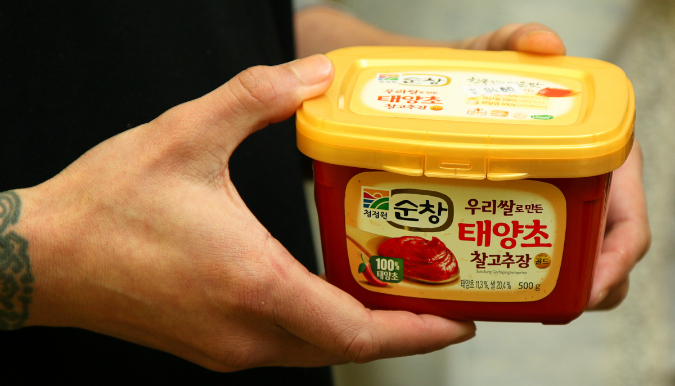
The dish they are preparing is Bibimbap which means “mixed rice“*. It is known as the Korean signature dish and is a great introductory meal for anyone wishing to explore Korean cuisine.
BIBIMBAP
Serves 4
Rice (enough for 4 people – use a rice cooker if possible)
250 g beansprouts
6 to 10 cloves of garlic
500 g bag of spinach
1 carrot
1 zucchini
6 dried shiitake mushrooms (soaked for 20 mins)
about 30g dried kosari (bracken), boiled and soaked overnight (if you can’t get this just use more vegetables)
200g minced beef
Ground black pepper
4 eggs
Crushed gim (nori seaweed)

Cook the rice in a pot or rice cooker.
Wash the beansprouts and cook them in 1 cup of salty water, about 20 mins. Drain and mix them with 1 clove of crushed garlic and some sesame oil. Put on a platter and set aside.
Blanch the spinach in boiling water until it wilts (about 1 min), drain then mix with 1 clove of garlic, some sesame oil, and 1 tsp soy sauce. Add to platter.
Chop the zucchini into julienne strips and saute in vegetable oil for about a minute, then add to platter. Do the same with the carrot.
Chop the mushrooms into small pieces and saute in vegetable oil with a little soy sauce and sugar for 2 mins. Add some sesame oil when they are done and add to the platter.
Chop the kosari into 4-5 cm strips and saute in vegetable oil with a little soy sauce, sugar and garlic for 1-2 mins. Add sesame oil when its done and put it on the platter.
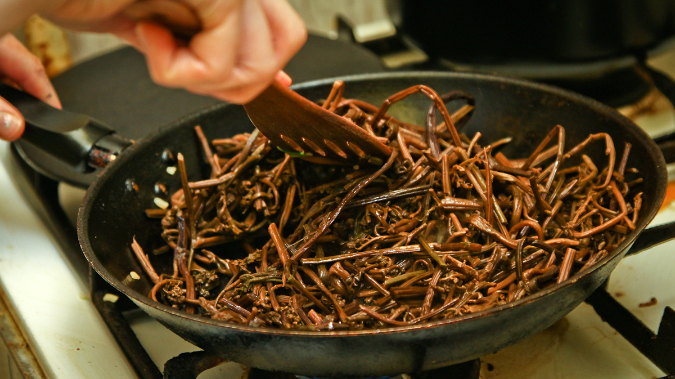
Cook minced beef in a pan with 4 cloves of crushed garlic, add a little soy sauce, sugar, ground black pepper, and some sesame oil. When it’s done, add it to the platter.
Fry 4 eggs sunny side up.
Serve by making a layer of rice in a bowl. Arrange the vegetables, kosari and meat on the rice. Finish with a fried egg on top of each serving.
Finally add a spoonful of gochujang, a dash of sesame oil, a sprinkle of sesame seeds, and some crushed seaweed on top. Mix it all up and serve.
[TIPS] It is best to keep some salt, soy sauce, gochujang (Korean chili paste), garlic, sesame seeds, sesame oil, sugar and vegetable oil on hand as they are used throughout the preperation process. This receipe can be altered to suit vegetarian/vegan palates, just leave out the egg and/or beef/anchovies.
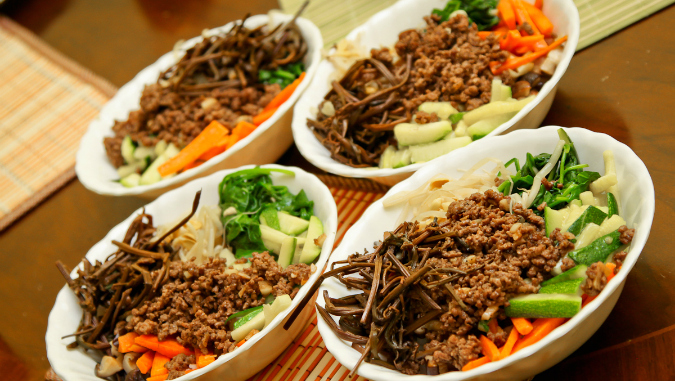
The complicated process is carried out in Khan and Jessica’s small kitchen with precision and team work that has developed over years of practice and the end result if worth applauding.
The table is loaded with assorted side dishes known as banchan that will accompany the bibimbap meal which is both simple and complicated. Among them are stir-fried dried anchovies, stir-fried fish cakes, spicy pickled cabbage (kimchi), sauteed bracken, and soybean sprout soup.
Somehow each ingredient keeps its own unique flavor but also compliments all the other flavors when mixed together so that it’s like eating layers of tastes in one bite.
“Masshitgae mogoyo”…or bon appetit in Korean!
**
Korean food resources in Prague:
Shin Food
Asíjské Potravíny
Korunní 47/1186
Praha 2
603 484 802
www.shinfood.com
Mamy Korean Restaurant
Benediktská 1060/3
Praha 1
224 815 009
www.mamyfood.cz
Photos by Margot Buff.
View For Foodies in a larger map
Related articles












 Reading time: 4 minutes
Reading time: 4 minutes 